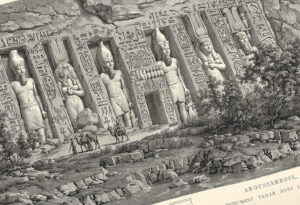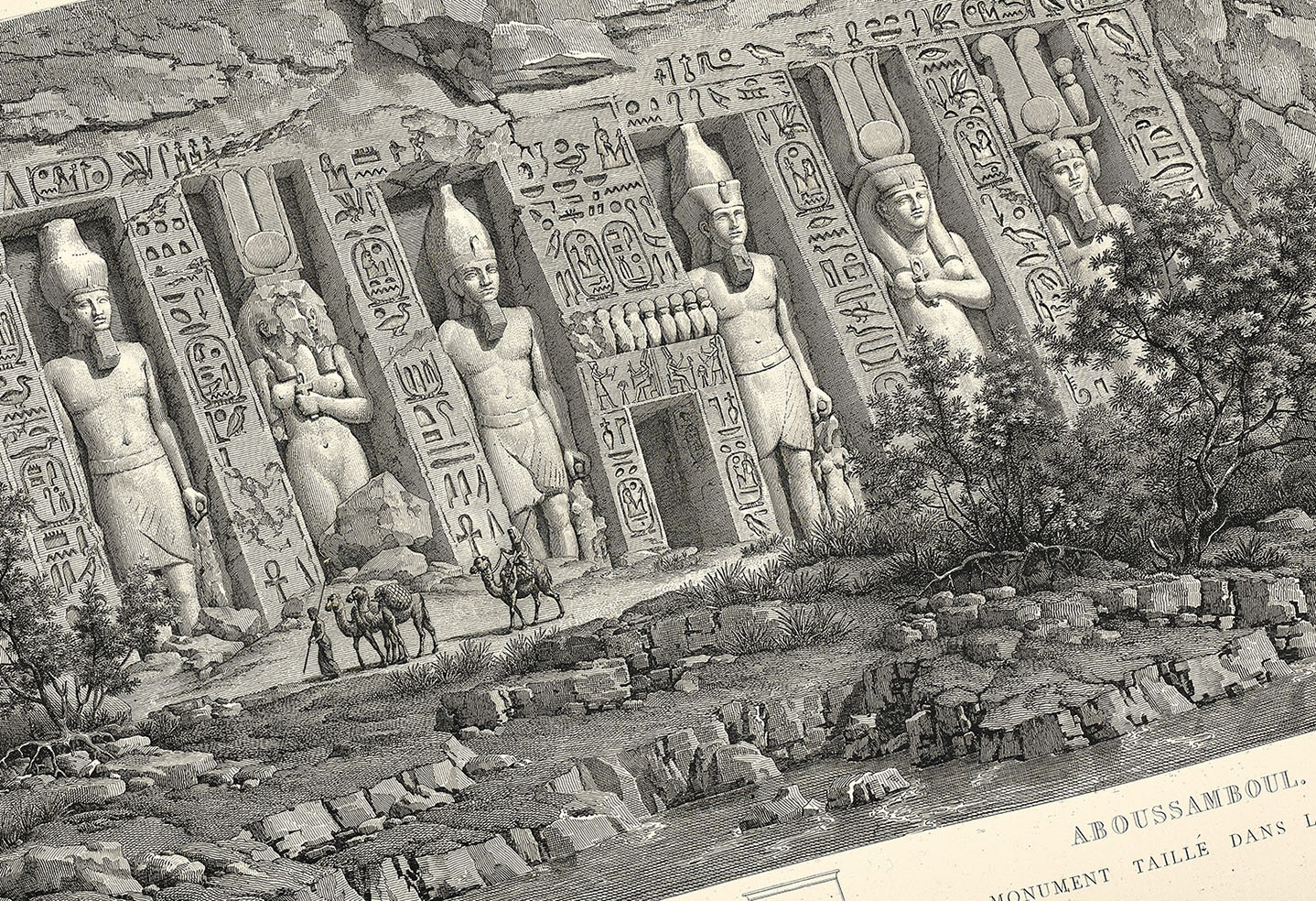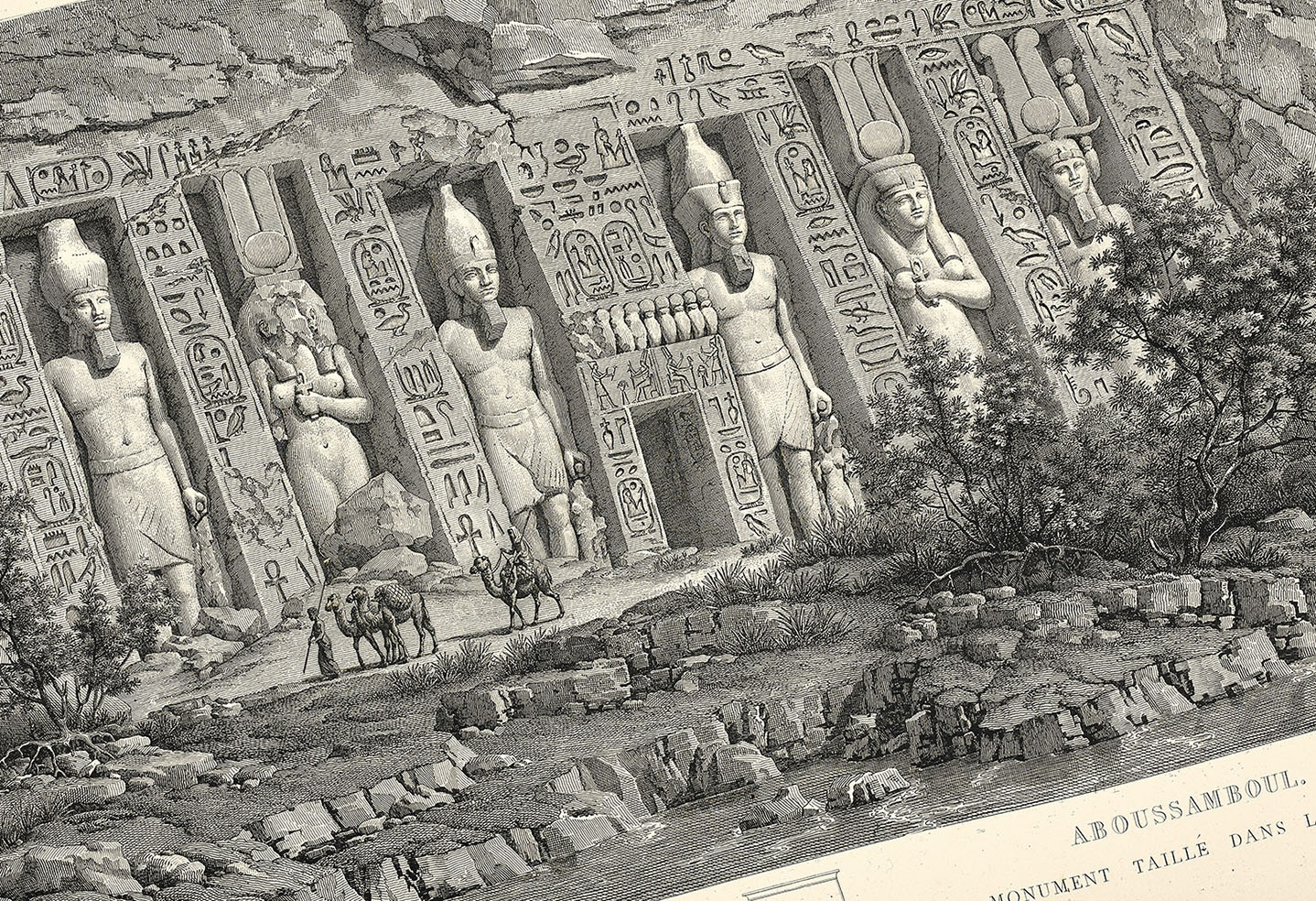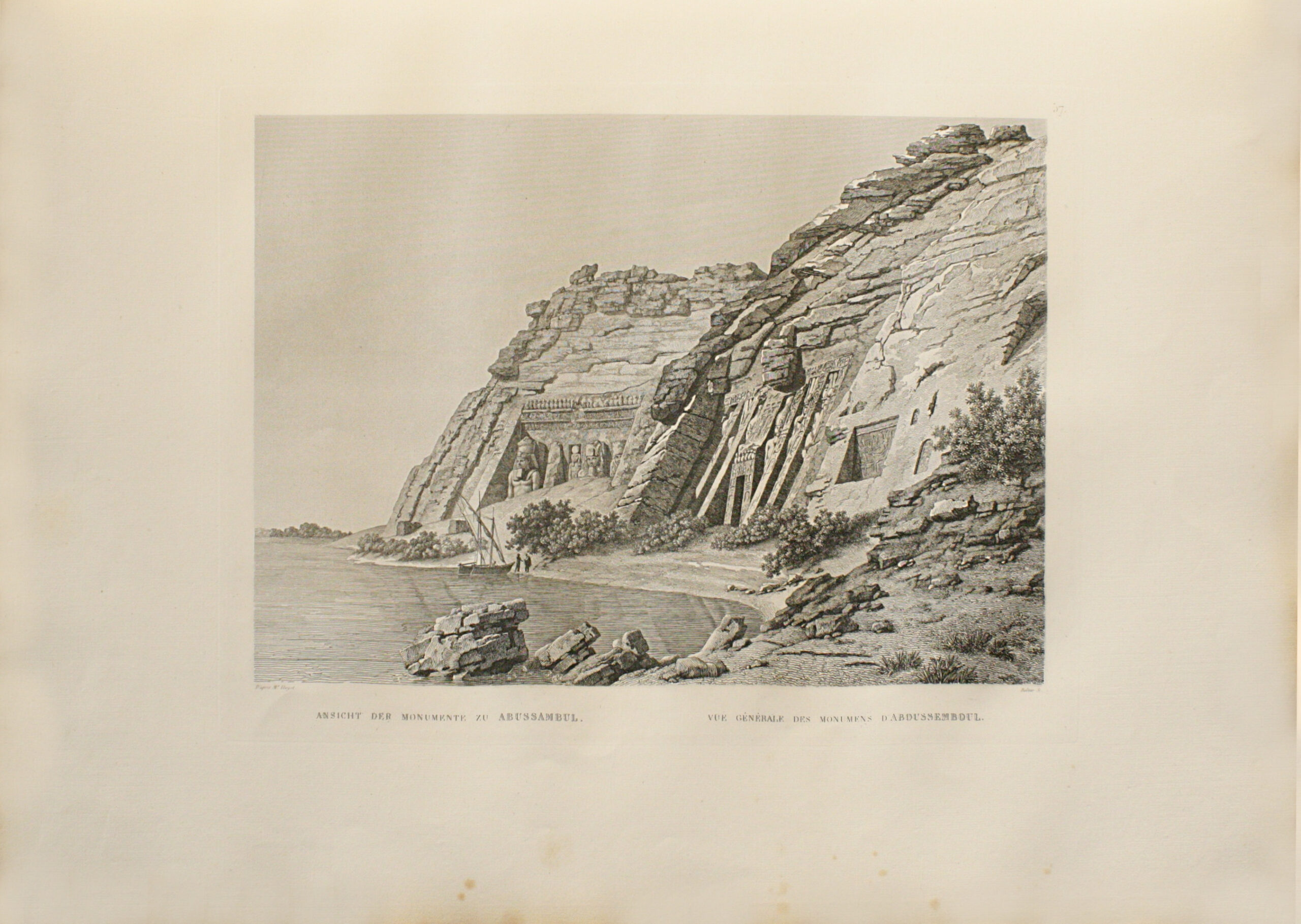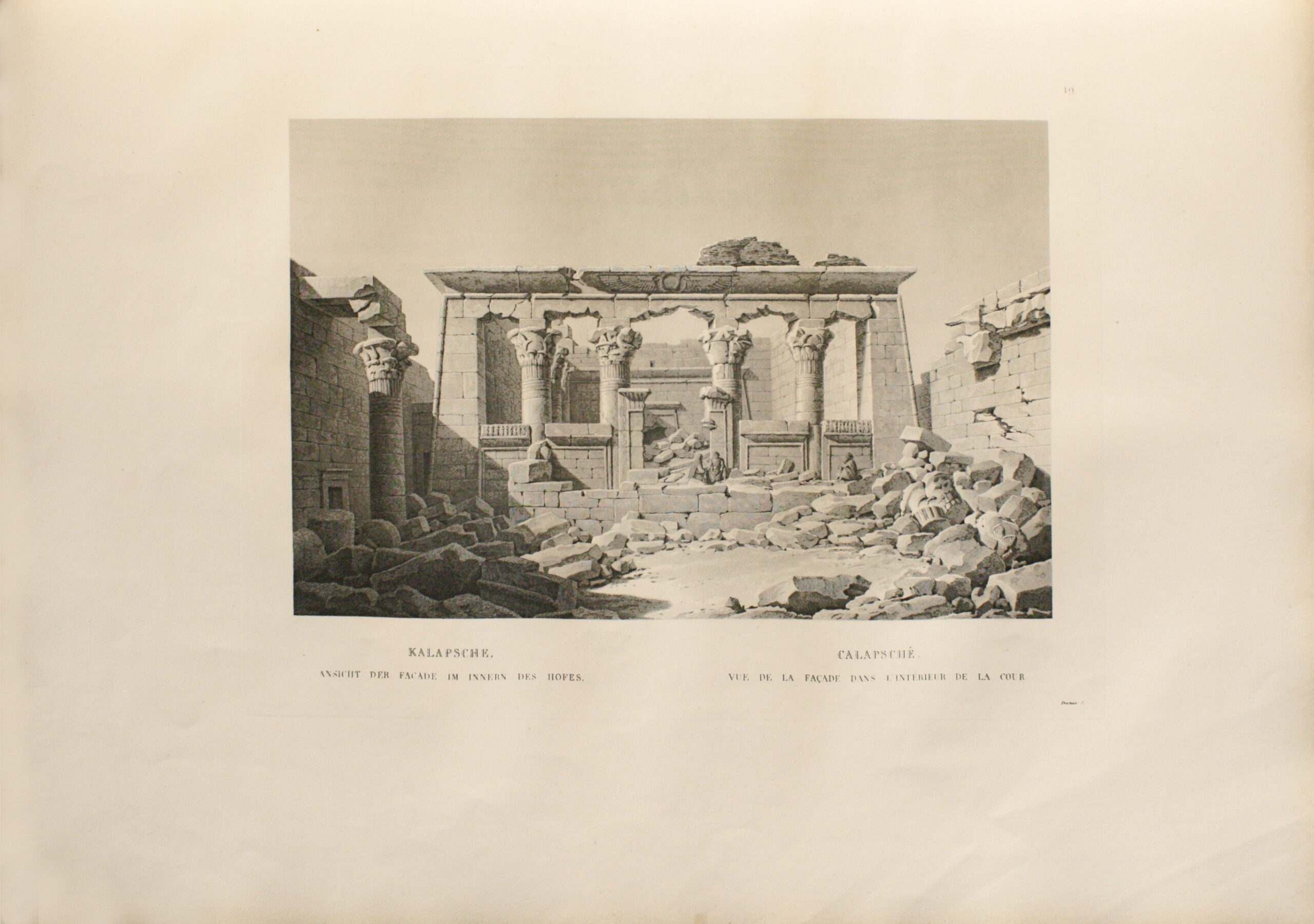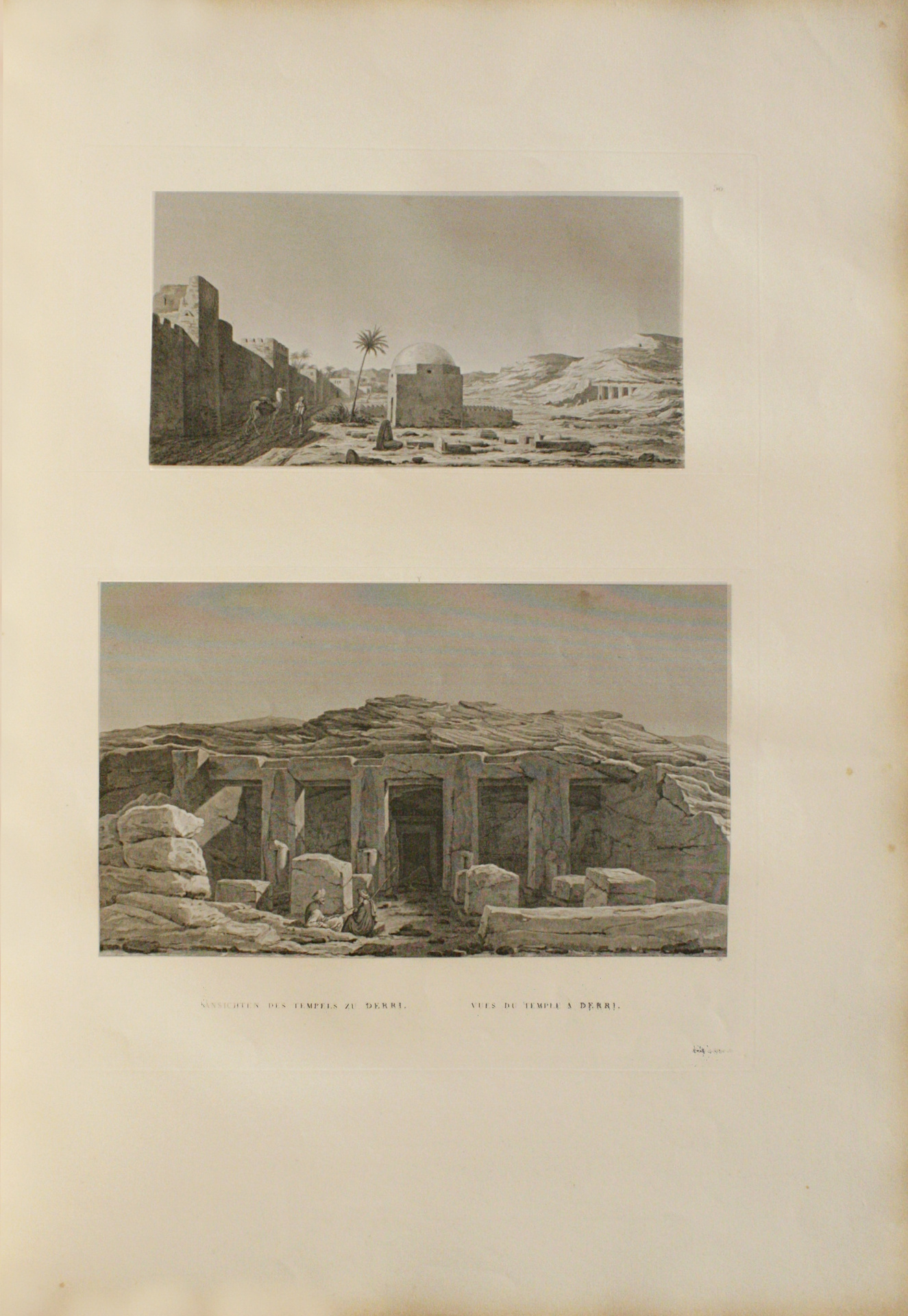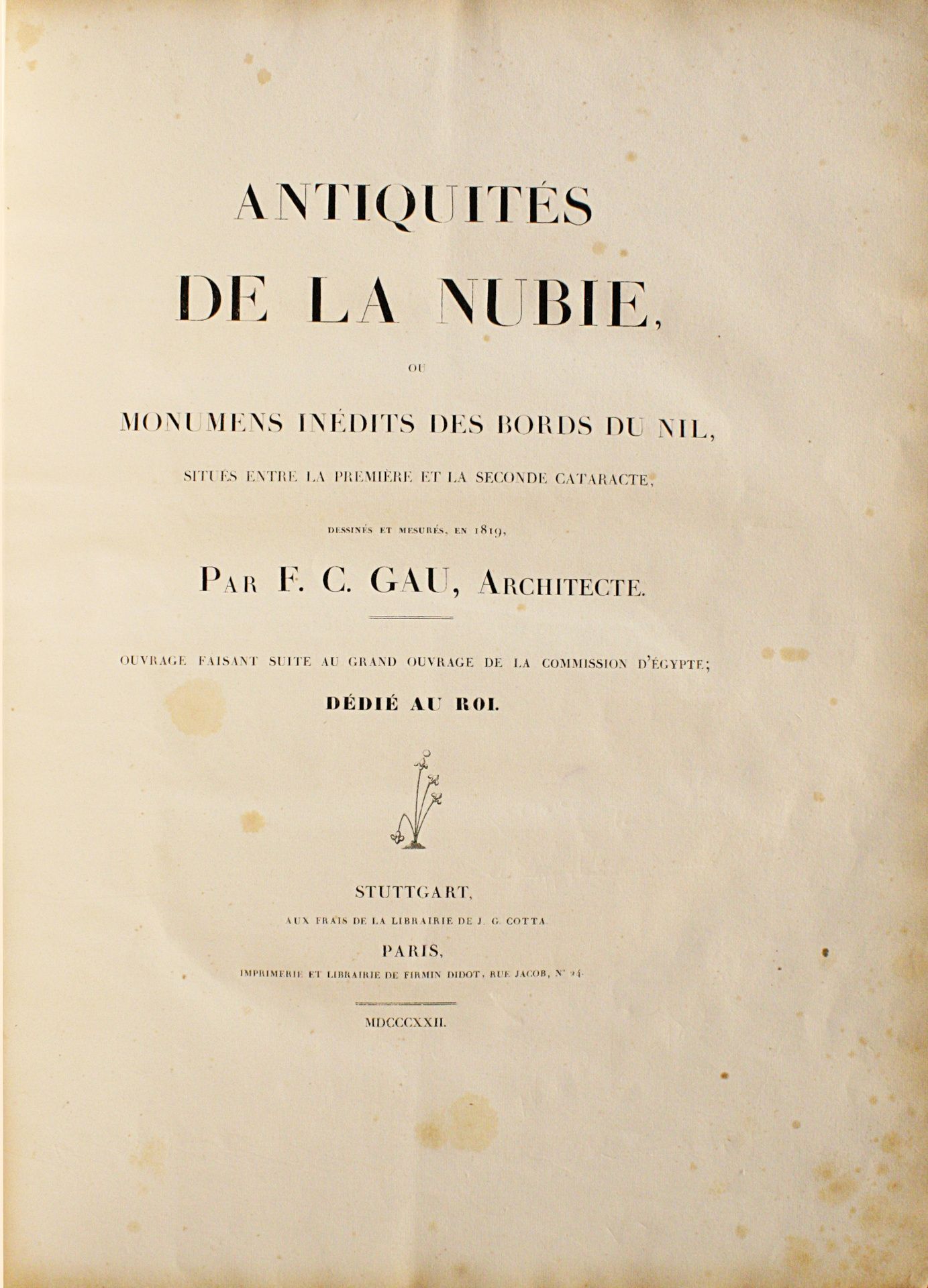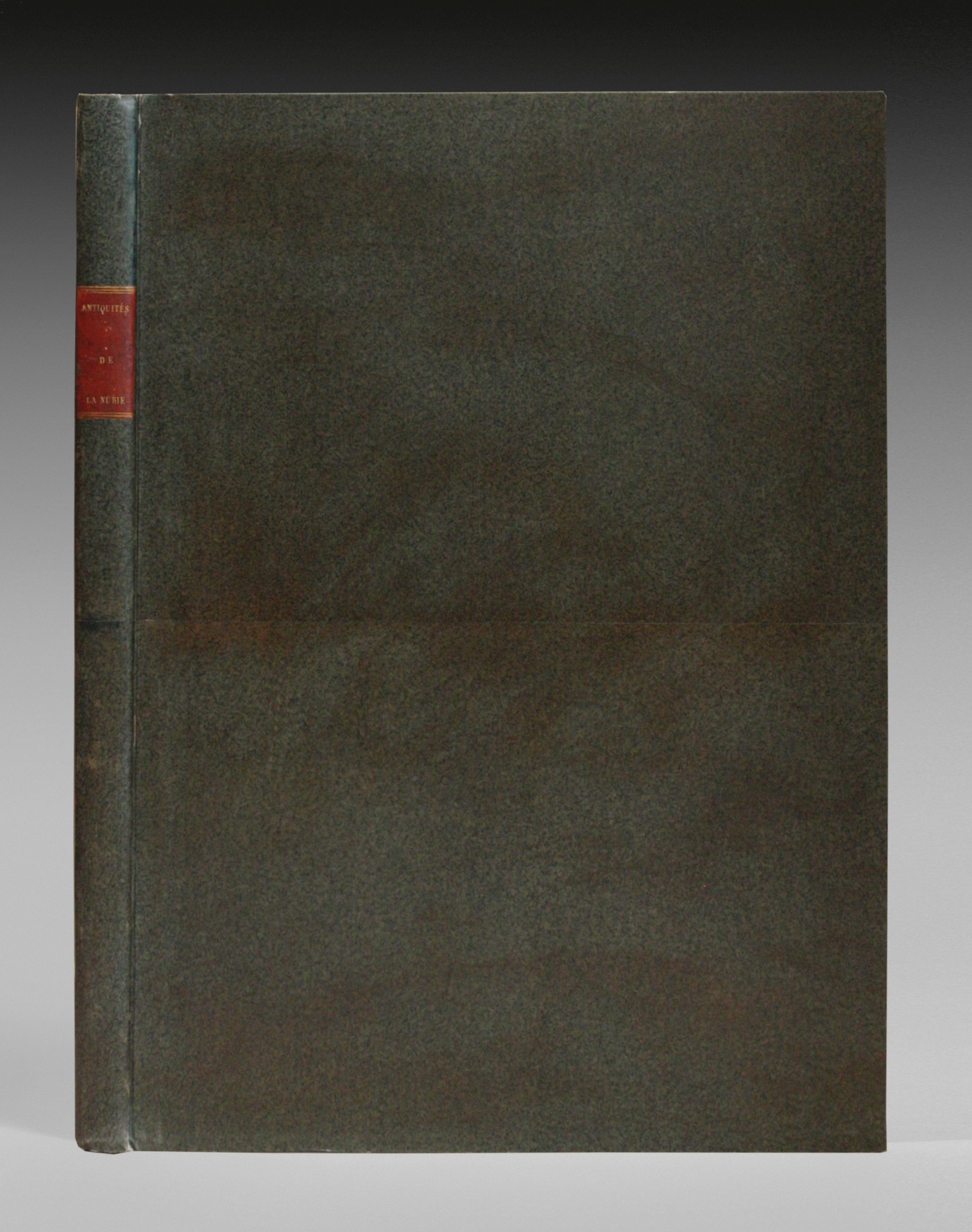Stuttgart, Paris, imprimerie et librairie de Firmin Didot, 1822-1827.
Elephant folio [710 x 517 mm] of viii pp., 20 pp., 13 ll. of explanation of the pates, 64 full-page numbered plates including 5 in colors, 29 pp. of text, 14 full-page plates.
Green original paper boards, flat spine with red morocco lettering piece, untrimmed. Contemporary binding.
First and unique edition of this « reference work on antique art, culture and architecture of the Nile Valley » according to the catalogue of the Royal Institute of British Architects.
Graesse, Trésor de livres rares, 34 ; Blackmer 656 (with 4 plates in color only).
This work of impressive dimensions, offering “the most complete survey of its time of Nubian antiquities”, was published in 13 parts between 1822 and 1827.
“This fine work was published in 13 parts, of which the last is double: each part costed 18 fr. – Vel. pap. 36 fr.” (Brunet, II, 1501).
“The standard work on the ancient art, culture and architecture of the Nile Valley, and the most complete pictorial record of Nubian antiquities of its day’; ‘most of the engravers whose work is seen here also worked on Description de l’Egypte, to which the present work was intended to be an informal adjunct” (RIBA 1180).
“The main worth of this work – the sequel to the ‘Description of Egypt’ – is to be the essential supplement of all studies on the ancient inhabitants of the Nile Valley ; the second is to indicate, with a brand new precision, the link between evolutions in the taste of architecture and the march of civilization of a population ; add to this the reproduction of exact drawings, coming with a text written by two scholars, Letronne and Niebuhr.
Born in Cologne on June 14th 1790, Francisque-Christian Gau came to Paris in 1809 to study architecture. His masters were Debret and Lebas. In 1817, he seized the opportunity to go to Egypt, and, thanks to the protection of a German doctor and of our Consul Drovetti, he found a way to enter Nubia ; there, he could execute his project, well-thought for a long time, of giving a sequel to the archeological works of the Egypt Commission, by drawing the monuments along the Nile above the Second Cataract.
Back to France and after having finished the last two volumes of Mazois’ great work about Pompeii, he abandoned theory and history for practice, and, being granted French citizenship, he obtained important works from the city of Paris. We will only mention the church Sainte-Clotilde, in the faubourg Saint Germain… Gau died in Paris in 1853.” (Vinet, 215).
“Price of the part: 16 fr. on thin paper, and 36 fr. on vellum paper. The existence of Egyptian monuments in Nubia was known for a long time: some travel accounts, mainly from Norden, never left a single doubt about it. During the Egyptian expedition, compelling circumstances didn’t allow the French scholars to go further Philae, and thus to complete their beautiful and priceless collection of Egyptian monuments, by providing precious means to compare those of Egypt and those of Nubia. Since then, a few travelers went more or less further in the Upper Nile Valley, but they just described the monuments without drawing them; well, a monument that is only described is very badly known…
Mr. Gau, skilled architect, pupil from the French School, full of ardor and courage, conceived the project to fill the gap left by the Egyptian Commission in its work. After having studied the Egyptian architecture with the analysis of Higher Egypt monuments, he went up the Nile until the Second Cataract; and it is when going down this river that he drew and measured 21 monuments of the highest interest.
The first three parts of this work have already been published and fully justify the opinion that all those who saw Mr. Gau’s drawings made about them, executed with a remarkable choice and taste, touched with a unique delicacy, and, most of all, presenting this naive character that guarantees a perfect accuracy. It was easy to see that the author, accustomed to give exactly what he has in front of his eyes, didn’t put conventional figures instead of those of original figures. Under his pencil, Egyptian sculptures didn’t look like Greek sculptures ; there were the profiles, often bold, almost always inaccurate, this stiffness, this constant uniformity, this total absence of just and gracious forms, characters that enables us to immediately reckon the monotonous cuts that are called ‘Egyptian bas-relief’.
The perfection of Mr. Gau’s drawings passed into the engravings contained in the first third parts of his work; the eminent artists who were entrusted with the execution, met his expectations. The shaded plates are of a harmonious effect; the burin is firm and steady: the picturesque views, so carefully chosen by Mr. Gau, are captured with taste and spirit; and the drawings of architecture and sculpture give a precision and a finish that could not be praised too much. Here is for the material part; if the rest of the work goes on as it started, it will be one of the best executed that exist of that kind…
Mr. Gau took Philae for starting point, and he goes up the Nile from North to South, therefore the last drawings of his work will be views of the Second Cataract…
The text of this work will be written for the larger part by Mr. Niebuhr, who will give the explanation of the numerous inscriptions collected by Mr. Gau during his trip. The example of his work given by this scholar in his ‘Nubian inscriptions’, creates a strong desire to see all of it.
After a brochure recently published, Mr. Gau announces that he will develop in his text several important propositions for the history of philosophy of art; he believes he can establish that the entire Egyptian architecture has its types in the monuments of Nubia, from the first sketches roughly graved in the rock, to the latest buildings constructed under the Ptolemees…
Mr. Gau presents his work as ‘the possible sequel’ to the great description of Egypt: we are not afraid to affirm that it is its ‘essential sequel’. Without pretending to establish a parallel between both works, of which one was published with all the financial means and all the magnificence that only a government could display, the other one made by a single man, and with the simple resources of individuals found of arts, we can assure that Mr. Gau’s work, perfectly well conceived, arranged in smaller and more convenient proportions, reduced to the essential and truly interesting objects, presents, with more unity in its plan, an execution just as perfect and up to here a lot more equal ». (Letronne, Journal des Savans, Janvier 1822, pp. 285 à 293).
The present work contains 64 full-page plates showing more than 180 views, plans, sections, elevations, architectural details, including 5 with colors, and also 14 plates of inscriptions accompanied with an epigraphic study by Niebuhr completed by Letronne, and 13 fine engravings at the head of the plates’ explanations, including 2 with colors. Most of the artists that engraved these drawings, known for their accuracy, also took part in the illustration of the Description of Egypt, of which the present volume forms an unofficial sequel.
Precious copy on vellum paper, very wide-margined since untrimmed, preserved in its original paper boards.
